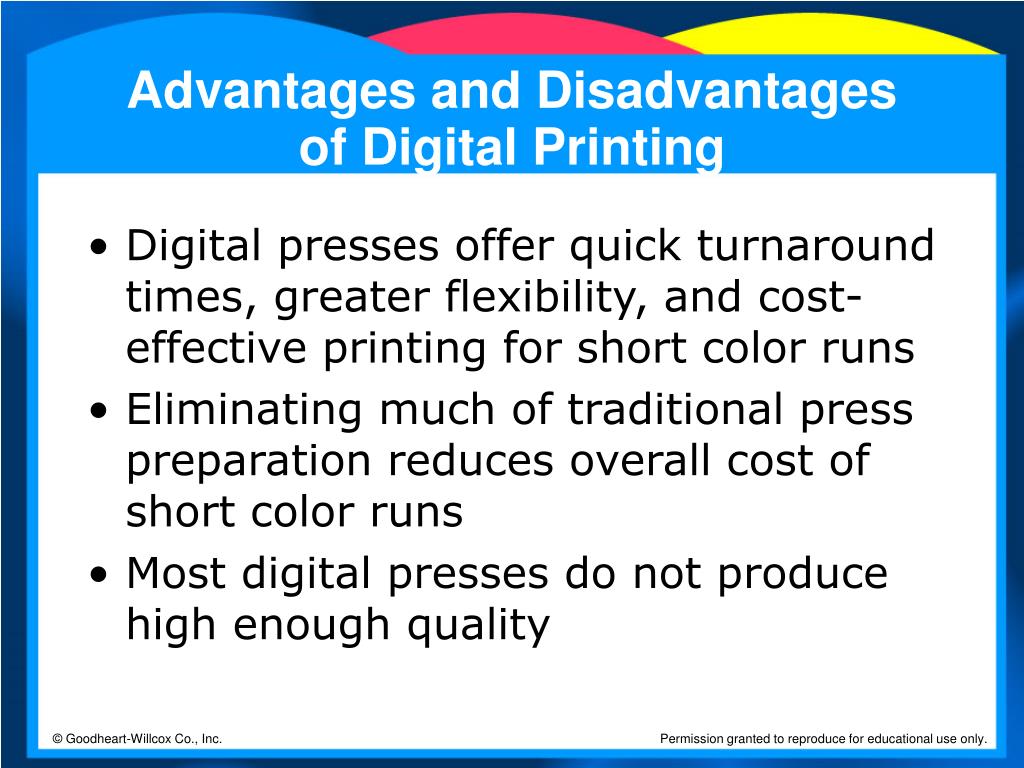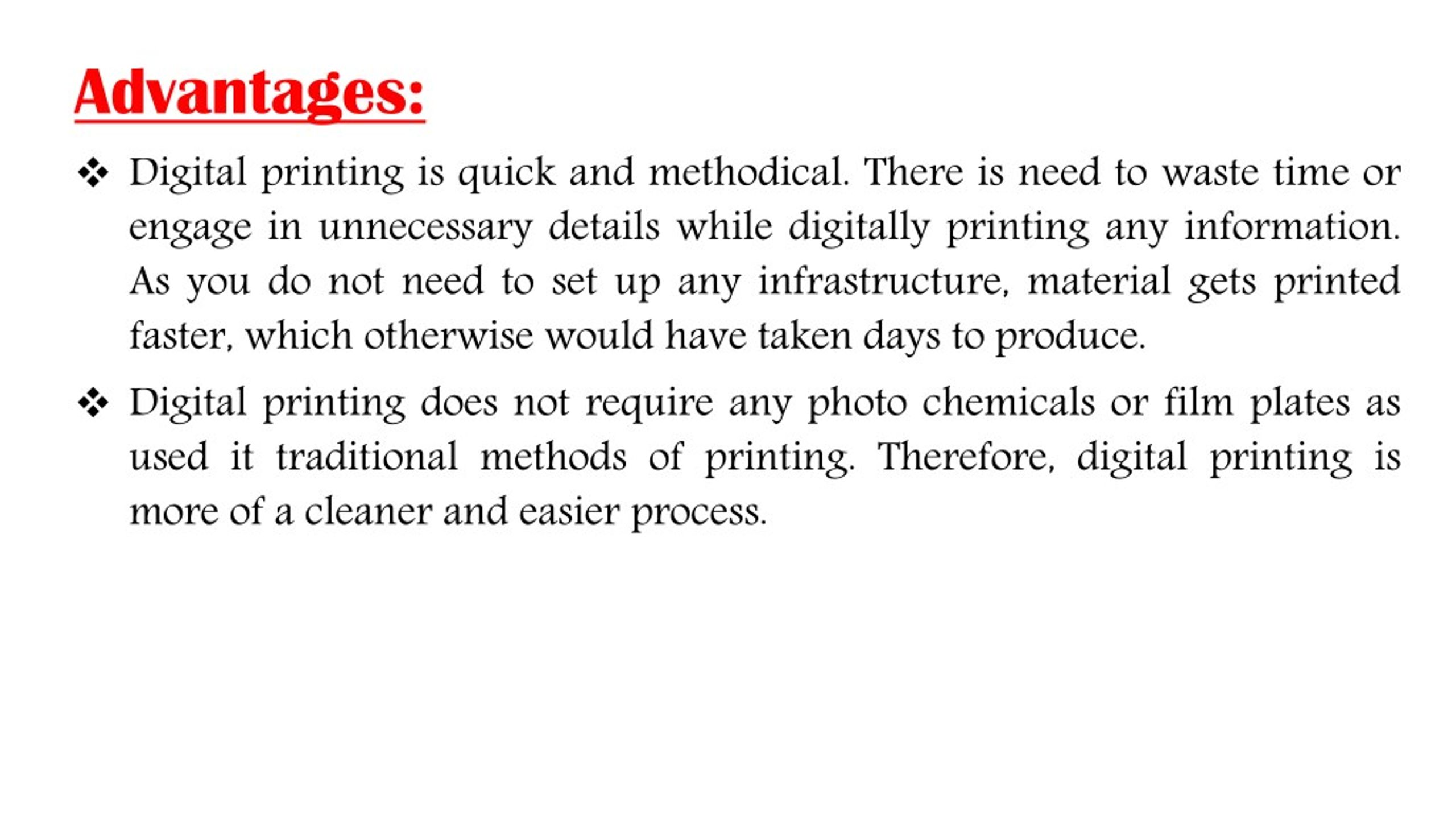What Does Digital Printing Do?
Table of ContentsThe 25-Second Trick For Digital Printing7 Easy Facts About Digital Printing DescribedGetting The Digital Printing To WorkDigital Printing Things To Know Before You Get ThisTop Guidelines Of Digital PrintingUnknown Facts About Digital Printing
Variable data printing, such as direct mail with customized codes and addresses, is preferably suited for digital printing. Digital quick printing only needs 4 actions of style, evaluation, printing and binding to get everything done. Digital quick printing has an unparalleled benefit: print on demand.According to PMMI, digital printing permits brand names and manufacturers to respond rapidly to consumer needs while boosting the supply chain, decreasing warehousing price and waste, and enjoying faster time to market. That all noises terrific, but just how does this technology do all that? The significant differentiator of these innovations is that there are no set up charges and no plates with electronic printing.
Not known Facts About Digital Printing
According to Wikipedia, the best difference between electronic printing and traditional techniques such as lithography, flexography, gravure, or letterpress - Digital Printing is that there is no need to replace printing plates in electronic printing, whereas in these analog printing methods home plates are repeatedly changed. This results in quicker turn-around time and lowers price when utilizing electronic printing.
Digital printing is extremely versatile, so it's very easy to make changes to the plan design rapidly. It all goes back to the plates.
With traditional printing methods, short-run printing is just not feasible. Due to the fact that a great layout can make or damage your product, digital printing consistently creates high-quality, clear and vivid graphics each time.
Digital printing is the procedure of printing digital-based pictures directly onto a variety of media substrates. There is no need for a printing plate, unlike with countered printing. Digital documents such as PDFs or desktop publishing files can be sent out straight to the electronic printing press to print theoretically, picture paper, canvas, textile, synthetics, cardstock and other substrates.
The Digital Printing Diaries
According to PMMI, digital printing allows brand names and suppliers to respond rapidly to consumer demands while enhancing the supply chain, decreasing warehousing cost and waste, and taking pleasure in faster time to market. That all noises terrific, however how does this technology do all that? The major differentiator of these innovations is that there are no set up fees and no plates with electronic printing.
According to Wikipedia, the best difference in between electronic printing and conventional approaches such as lithography, flexography, gravure, or letterpress is that there is no requirement to replace printing plates in electronic printing, whereas in these analog printing methods the plates are repeatedly replaced. This leads to quicker turn-around time and reduces price when utilizing electronic printing.

The Main Principles Of Digital Printing
More inventory can imply more waste later on. With conventional printing methods, short-run printing is just not feasible. Due to the fact that a terrific style can make or break your product, digital printing consistently creates top notch, clear and vibrant graphics each time. Digital printing on versatile pouches adds the bright, vibrant, and precise graphics that practically beckon customers to connect and touch them.

According to my site PMMI, digital printing permits brands and producers to respond quickly to consumer demands while boosting the supply chain, reducing warehousing price and waste, and taking pleasure in faster time to market. That all noises fantastic, but just how does this innovation do all that? The major differentiator of these modern technologies is that there are no set-up costs and no plates with digital printing.
Things about Digital Printing
According to Wikipedia, the greatest distinction between digital printing and typical techniques such as lithography, flexography, gravure, or letterpress is that there is no requirement to replace printing plates in digital printing, whereas in these analog printing approaches the plates are consistently replaced. This causes quicker turnaround time and decreases cost when making use of digital printing.
Rapid manufacturing means obtaining your product to market quicker. It also indicates it's simpler and faster to make modifications later, when you change a dish, add a SKU, or develop seasonal packaging. Digital printing is highly versatile, so it's easy to make adjustments to the bundle layout rapidly. All of it goes back to home plates.

How Digital Printing can Save You Time, Stress, and Money.
Digital printing is the process of printing digital-based pictures straight onto a variety of media substrates. There is no demand for a printing plate, unlike with balanced out printing. Digital documents such as PDFs or desktop computer posting documents can be sent out straight to the digital printing press to publish theoretically, image paper, canvas, textile, synthetics, cardstock and various other substrates.